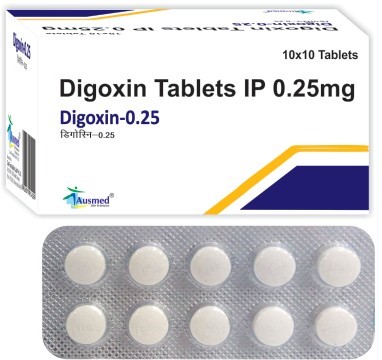A patient with atrial fibrillation and a serum potassium level of 3.0 mEq/L takes digoxin (Lanoxin), ASA (aspirin), KCL (potassium chloride), and warfarin (Coumadin) daily. The patient reports visual disturbances. The nurse suspects problems with which medication?
Potassium chloride.
Warfarin.
Aspirin.
Digoxin.
The Correct Answer is D
Digoxin. Choice A rationale:
Potassium chloride (KCL) is a supplement used to treat or prevent low potassium levels. While it can have side effects, visual disturbances are not typically associated with KCL. Therefore, it is not the medication the nurse suspects to be causing the problem.
Choice B rationale:
Warfarin (Coumadin) is an anticoagulant used to prevent blood clot formation. Visual disturbances are not a known side effect of warfarin. Therefore, it is unlikely to be the cause of the patient's symptoms.
Choice C rationale:
Aspirin (ASA) is a pain reliever and antiplatelet medication, and while it can cause visual disturbances in some cases, it is not a common or significant side effect. Aspirin is also not specifically linked to atrial fibrillation.
Choice D rationale:

Digoxin (Lanoxin) is used to treat atrial fibrillation and heart failure. Visual disturbances are a known side effect of digoxin toxicity. Given the patient's diagnosis of atrial fibrillation and the reported symptoms, the nurse suspects the problem lies with digoxin and should further investigate and report to the provider.
Nursing Test Bank
Naxlex Comprehensive Predictor Exams
Related Questions
Correct Answer is B
Explanation
Choice A rationale:
A phosphorus level of 4.5 mEq/L falls within the normal range, which is typically between 2.5 to 4.5 mEq/L. Although it's essential to monitor phosphorus levels, it is not the priority finding in this scenario.
Choice B rationale:
A potassium level of 2.9 mEq/L is the priority finding. The normal range for potassium is typically between 3.5 to 5.0 mEq/L. A potassium level of 2.9 mEq/L indicates severe hypokalemia, which can lead to life-threatening cardiac arrhythmias and muscle weakness. Immediate intervention is necessary to address the potassium imbalance.
Choice C rationale:
A calcium level of 8.2 mg/dL falls within the normal range (typically 8.5 to 10.2 mg/dL). While calcium levels are essential to monitor, they do not take precedence over the critically low potassium level in this situation.
Choice D rationale:
A sodium level of 145 mEq/L falls within the normal range, which is usually around 135 to 145 mEq/L. Although monitoring sodium levels is important, it is not the priority finding when compared to the critically low potassium level.
Correct Answer is ["A","C","D"]
Explanation
A, C, and D.
Choice A rationale:
The administration of sodium bicarbonate helps to correct acidosis, which can occur in chronic renal failure due to the accumulation of metabolic waste products in the absence of effective kidney function.
Choice C rationale:
Sodium polystyrene sulfonate (Kayexalate) is used to treat hyperkalemia, which is common in chronic renal failure due to impaired potassium excretion by the kidneys.
Choice D rationale:
Insulin can be prescribed to treat hyperkalemia by promoting the uptake of potassium into cells, thereby reducing the serum potassium level. Choice B and E rationale: Dextrose 10% and furosemide (Lasix) are not appropriate treatments for hyperkalemia. Dextrose 10% is asugar solution and does not impact potassium levels, while furosemide is a loop diuretic that primarily affects sodium and water excretion, not potassium.
Whether you are a student looking to ace your exams or a practicing nurse seeking to enhance your expertise , our nursing education contents will empower you with the confidence and competence to make a difference in the lives of patients and become a respected leader in the healthcare field.
Visit Naxlex, invest in your future and unlock endless possibilities with our unparalleled nursing education contents today
Report Wrong Answer on the Current Question
Do you disagree with the answer? If yes, what is your expected answer? Explain.
Kindly be descriptive with the issue you are facing.
